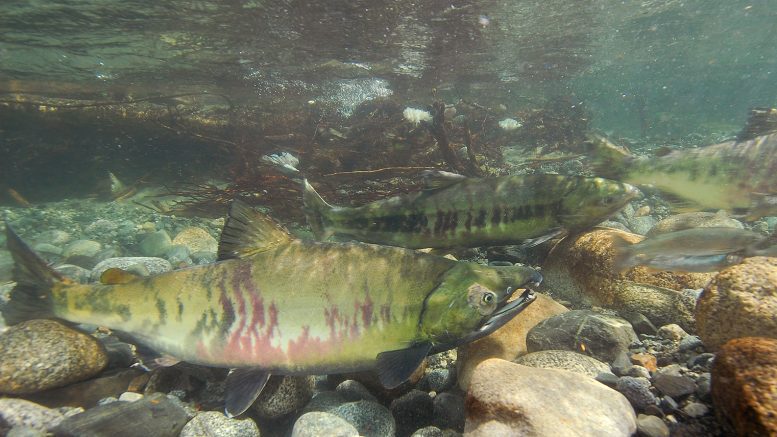Many people think that having salmon in traditional fishing grounds would be a good thing.
But that’s simply not necessarily the case for some fishers in the Northern part of the Northwest Territories.
The issue was brought up this week in the Legislative Assembly by Herb Nakimayak, the MLA for Nunakput.
“Constituents are posting on social media about the high amounts of salmon they are catching in their fish nets in the Beaufort Sea. The Arctic char at this time are usually feeding along the coast before they migrate up the lakes and rivers for the winter,” Nakimayak said. “I am worried that these invasive species will take over some of the lakes and rivers where we harvest Arctic char, whitefish, coney, herring, lake trout, and other fish species, ultimately affecting the ecosystem as a whole.”
Nakimayak says ocean currents are warming and allowing species that do not usually migrate to the Arctic to traverse the waters through the high seas, and that, he says, affects the ecosystem both on and offshore.
He adds that warmer water is bringing species such as salmon to traditionally colder water, which means that they are changing the balance of the ecosystem in the Arctic.
“Fish farming in Alaska is likely contributing to this increase, and we must work with our co-management groups across the Northwest Territories and abroad to ensure that we are doing our best to support the rivers, lakes, and communities along the rivers and coast to ensure that this does not become a food security issue,” Nakimayak says. ” Local Indigenous knowledge is key to the planning, conservation, and protection of the species in the Northwest Territories and across Canada.”
Robert C. McLeod, the Environment and Natural Resources Minister (ENR) says he is aware of the concerns.
“There is currently a University of Manitoba/Department of Fisheries and Oceans (DFO) Salmon Research Project addressing the issue of salmon being captured in the Canadian Arctic in more places and in seemingly higher numbers than ever before,” McLeod told the assembly.
McLeod says there are a lot of changes going on, and people are aware that a lot of species that have been seen in places that they are not used to being seen.
He adds the Arctic Salmon Research Project is actually looking into what the appearance of salmon means to the native fish species.
“The lead researcher regularly reports back to the community, and my understanding is the project does rely on some of the salmon that is turned in by community fishers, and my understanding, again, there are a couple of different value gift cards that are available to community members who turn in a full salmon or a salmon head,” McLeod said. “I think there is more information that could be obtained as to what that consist of and, if … the community doesn’t have access to that information, I will be sure that they get it.”
A Northern fish expert, who didn’t want his named used at this time, says he expects researchers will continue to monitor the size of species like Arctic char.
“If there is a decrease in size of species like Arctic char, then that’s a clear sign that there is intense competition for food with the Arctic salmon. That’s something researchers could be looking at,” he said.
John has been in the broadcast journalism industry since the 1980s. He has been a reporter in Yellowknife since 2012 and joined CKLB in January of 2018.
John covers the crime and court beat as well as reporting on other areas including politics, business, entertainment and sports.
He won seven national community newspaper awards while he was a journalist with Northern News Services Limited (NNSL).
John worked in Ontario before coming North including stints as a TV sportscaster in Peterborough and senior news writer for CBC and CTV in downtown Toronto.





